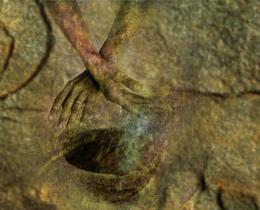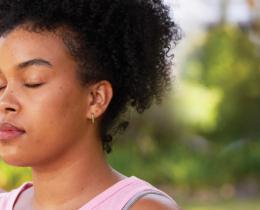Water that flows from the Earth, to trees, and us, is like milk that flows from mother to child. It’s similar to the love that pours from ancient mother goddesses to assist people through every phase of life, including death.
One such mother goddess who ushers us through death’s doorway is the Egyptian Lady of the Sycamore Tree. The Lady rejuvenates those who are dying and refreshes the souls of the dead in the afterlife by offering them water from the branches of her sacred tree.
The Nordic deity, Freya, as feared as she is revered, also tends to the souls of the dead and to those who are dying. Nomad and seer, guide to the afterlife, Freya is a volva, the ancient Norse word for shaman. She tells us, “Don’t think it coincidence that the word volva, resembles the word vulva.”
Goddess lore is steeped in the sensual and in the themes of renewal, creation, and birth. The deep feminine also cleanses and nurtures at death’s creative threshold, which is, in so many ways, like the portal of birth.
The Earth and goddesses do not fear demise; nature eats dead matter. Tibetans may even chop the corpse of a person who has recently died and feed it to the birds. Most of us can’t imagine this; we perceive it as gory.
Ancient peoples believed that consciousness continues and the body returns to the Earth. Children raised in such cultures have a folksy relationship with dying. The smells and sights of birth, life, and death aren’t hidden but available for all to experience.
Not too long ago, in my grandparents’ era in New England, people still birthed and died at home. It was not uncommon to lay the dead body out in the parlor for people to visit and pay their respects. These events were no longer happening by the time I was born.
Learning About Death From Animals
When I was a child, animals offered my only direct exposure to death. I always loved animals and, upon finding a small dead one, often carried it home with me to do a burial ceremony. Other children sometimes joined me in these rituals.
Once on my walk to school, I found a baby bird that had fallen from its nest. I took my sandwich out of my lunch box and removed it from its bag, placing the sandwich back in the box.
Then I put the dead bird inside the now-empty waxed paper bag. I slipped the bird bag inside my desk when I arrived at school, so that I could take it home at the end of the day and do a ceremony for the little creature.
Our Catholic school had desks with tops that didn’t lift; we had to bend over to look inside them. If something got shuffled to the back of the darkened desk, it could have been lost for weeks. This is what happened to the baby bird. It’s possible that the smell of the decomposing bird was what inspired the nuns to clean out all of our desks after school one day. Guess what they found in mine.
After the Sisters of the Holy Cross discovered a rotting bird “hidden” in a lunch sack in the back of my desk, school life became difficult for me for a while. Despite this the natural curiosity and empathy I held for dead and dying animals lived on.
As an adult I have sat with many animals as they lay dying. Some lost their lives to my own machine—my vehicle.
Not long ago, when driving my daughter to my cabin, I hit a rabbit that hopped onto the road. How horrible that felt! I turned the car around to see if the bunny was still alive. It lay there panting, blood dripping from its right eye.
Using a towel, my daughter and I gently placed the rabbit into a cloth sack. We walked out onto the land, and Sayre placed the bag on the ground and carefully opened it. I cringed as I watched the injured rabbit attempt to hop away to what I hoped would be safety.
I dropped to the Earth on my knees, emptied myself spiritually, and quietly chanted a Buddhist mantra. In these moments I was Freya.
As I softly sang to the rabbit, I was the ancient woman who waters from the Sycamore Tree, and simultaneously I was a tree flowing with renewing waters. In those moments I became inseparable from death’s alchemical goddess-midwives, pouring out nourishing energy just as The Lady of the Sycamore offered water to the dead and dying from her sacred tree.
The animal grew calm at the sound of my voice. It actually turned around and struggled to make its way back to me then, sat still and quiet. The rabbit and I gazed at each other for some time until the animal gently fell over onto the Earth.
I chanted for a while longer until Sayre and I agreed that we felt complete. We took in the beauty of this being then left the body where it lay. Other animals would return it to the land.
A few days later I visited the spot where the bunny died. A mostly eaten carcass remained, rabbit fur strewn helter-skelter.
All of us in modern times encounter hurt or dying animals on the road. Freya would not walk or drive by without stopping. Lady of the Sycamorewould sit with the dying one and bestow refreshing waters to prepare the being for the next journey.
Most of us have many numerous fears, ideas, and judgments about death. The trees and goddesses teach us how to sit at death’s portal by grounding in the Earth and being present.
As we settle our minds and open our hearts, nourishing energy will flow from us like the waters of the goddess’s sacred tree; it is a natural force of love.



